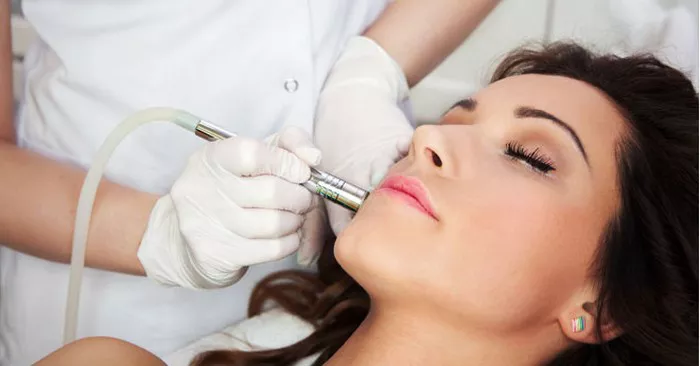The buccal fat pad is a distinct adipose tissue located in the cheek region. It is a unique structure that has been studied extensively in recent years due to its clinical significance in facial plastic surgery. The buccal fat pad is a deep-seated structure that is often overlooked in anatomy textbooks, and its precise location and function are not well understood. In this article, we will discuss the anatomy and clinical significance of the buccal fat pad.
Anatomy of the Buccal Fat Pad
The buccal fat pad is a rounded, yellowish mass of adipose tissue that is situated in the buccal space, which is located between the buccinator muscle and the masseter muscle. The buccal space is bordered by the zygomatic arch superiorly, the mandible inferiorly, and the maxilla anteriorly. The buccal fat pad is divided into three distinct compartments by fibrous septa. These compartments are known as the buccal, pterygoid, and temporal compartments.
The buccal compartment is the largest of the three compartments and is situated in the anterior portion of the buccal fat pad. It is bordered by the buccinator muscle anteriorly and the maxilla and zygomatic arch posteriorly. The pterygoid compartment is situated in the posterior portion of the buccal fat pad and is bordered by the pterygomandibular raphe medially and the lateral pterygoid muscle laterally. The temporal compartment is the smallest of the three compartments and is situated in the superior portion of the buccal fat pad. It is bordered by the temporalis muscle superiorly and the zygomatic arch inferiorly.
Function of the Buccal Fat Pad
The function of the buccal fat pad is not well understood. It has been suggested that the buccal fat pad plays a role in facial contouring and in maintaining the shape and fullness of the cheeks. The buccal fat pad is also thought to provide cushioning and protection to the underlying structures, such as the parotid gland and the facial nerve.
Clinical Significance of the Buccal Fat Pad
The buccal fat pad has gained significant attention in recent years due to its clinical significance in facial plastic surgery. The buccal fat pad can be selectively removed to create a more sculpted and defined facial contour. This procedure is known as buccal fat pad removal, or buccal lipectomy.
Buccal lipectomy is a relatively simple procedure that can be performed under local anesthesia. The procedure involves making a small incision in the oral mucosa and removing a portion of the buccal fat pad. The amount of fat removed depends on the patient’s individual anatomy and aesthetic goals.
Buccal lipectomy is a popular procedure among patients seeking a more defined facial contour. It is particularly popular among younger patients who desire a more chiseled and angular appearance. However, it is important to note that buccal lipectomy is not suitable for all patients. Patients with a thin face or a history of facial trauma may not be good candidates for the procedure.
Complications of Buccal Lipectomy
Like all surgical procedures, buccal lipectomy carries a risk of complications. The most common complications associated with buccal lipectomy include infection, bleeding, and nerve injury. Infection can be prevented by administering antibiotics before and after the procedure. Bleeding can be minimized by using careful surgical technique and by avoiding blood-thinning medications before the procedure. Nerve injury is a rare complication of buccal lipectomy, but it can occur if the facial nerve is inadvertently damaged during the procedure.
Conclusion
The buccal fat pad is a distinct adipose tissue located in the cheek region. It is a deep-seated structure that is often overlooked in anatomy textbooks. The buccal fat pad has gained significant attention in recent years due to its clinical significance in facial plastic surgery. The buccal fat pad can be selectively removed to create a more sculpted and defined facial contour. However, buccal lipectomy is not suitable for all patients, and it carries a risk of complications. A thorough understanding of the anatomy and clinical significance of the buccal fat pad is essential for facial plastic surgeons who perform buccal lipectomy.
FAQs
Where is the buccal fat pad located?
The buccal fat pad is located in the mid-cheek area, between the facial muscles and the outer skin. It extends from the temples down to the jawline and is situated between the buccinator muscle (which aids in chewing) and the superficial muscles of the face.
What is the purpose of buccal fat pads?
The buccal fat pads serve several purposes. They provide facial fullness and contribute to the contours of the face, particularly in the cheek area. Additionally, they play a role in protecting the facial muscles, nerves, and blood vessels, as well as aiding in the smooth movement of facial muscles involved in chewing and speaking.
How do you access the buccal fat pad?
Accessing the buccal fat pad typically involves a surgical procedure known as buccal fat removal or reduction. During the procedure, a small incision is made inside the mouth, near the upper molars, to access and remove a portion of the buccal fat pad. This procedure is usually performed by a plastic surgeon or an oral and maxillofacial surgeon.
How do you tell if you have buccal fat?
To determine if you have prominent buccal fat, look at the fullness of your mid-cheek area. Individuals with noticeable buccal fat tend to have rounder, fuller cheeks. If you pinch the area between your cheekbone and jawline and feel a significant amount of soft tissue, it may indicate the presence of buccal fat. Consulting with a healthcare professional can provide a more accurate assessment and advice tailored to your specific facial structure.


